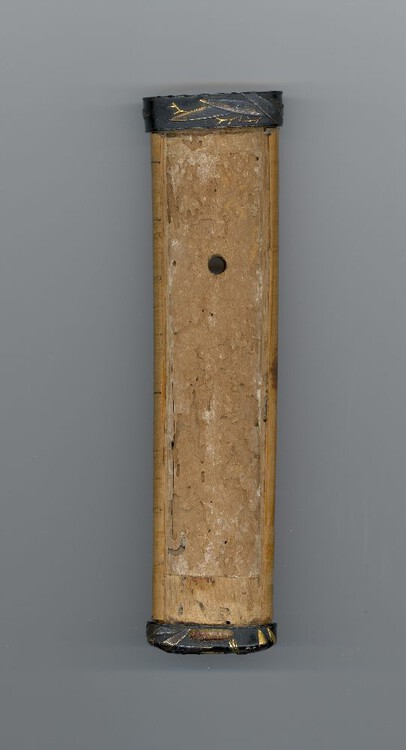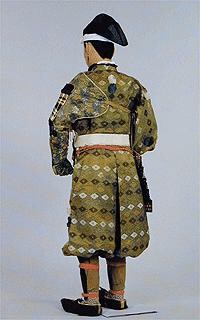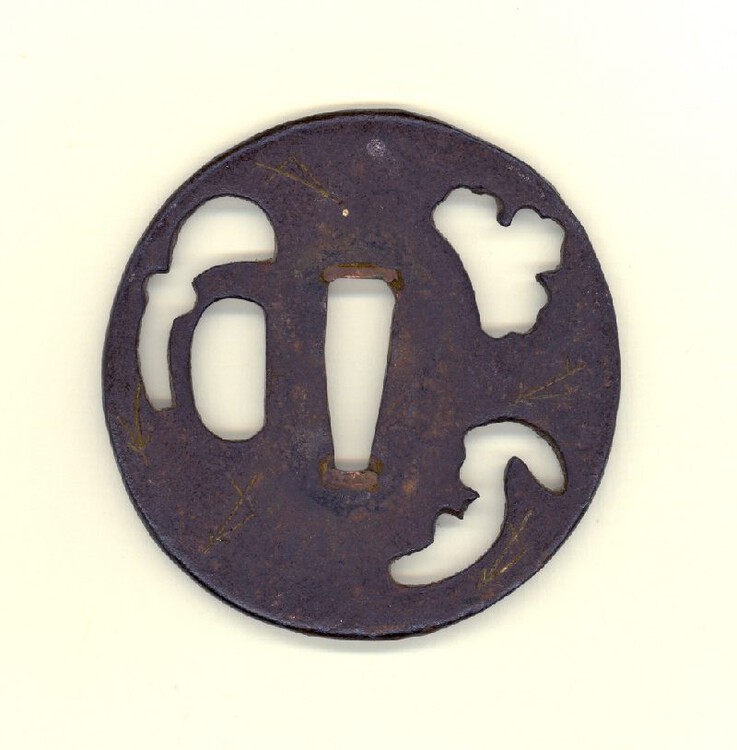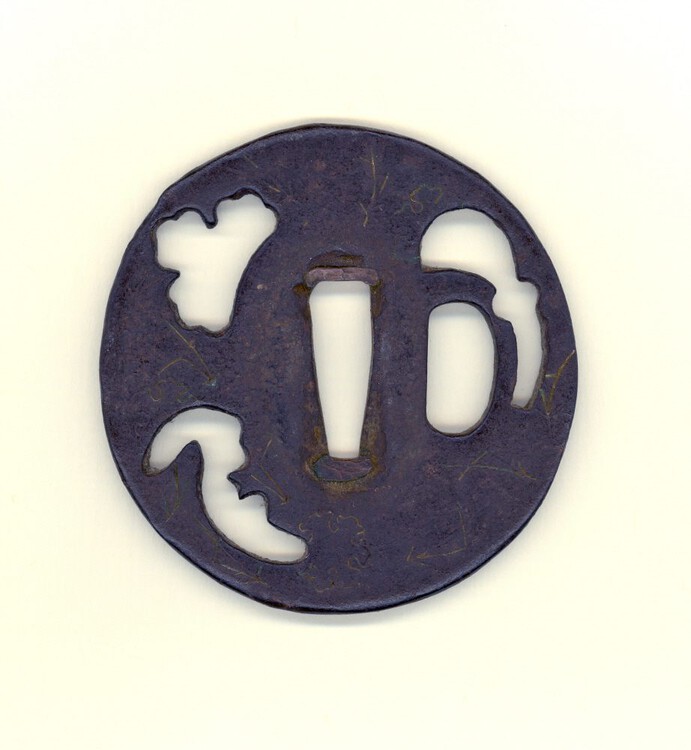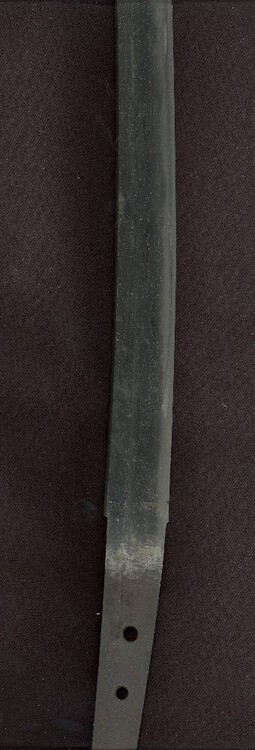-
Posts
30 -
Joined
-
Last visited
Profile Information
-
Location:
North Atlanta, Georgia, USA
-
Interests
WW II aircraft and artifacts
TAIOSON's Achievements
-
Moriyama san, once again I am in your debt. Thank you very much for looking at this for me. I was hoping the inscription said that the finder would get an all expenses paid trip to Japan. :lol: Oh well, I can dream. Thanks again for your help.
-
Thank you Moriyama san for your insight. I think it too looks like ginger now that you suggest it. I appreciate everyones kind help. Have you had the opportunity to look at the post with the tsuka mei? Sure need your help on that one. Thanks again.
-
Brian you answered a question I've had for some time. I tended to think all components of the nihonto were produced as a unit, i.e., all at the same time, and remained that way into the future. In regard to your response, would the same hold true for the tsuba also? Would tsuba be mixed and matched, as it were, over a long period of time? I ask this because I'm trying to use the tsuba to confirm the date of the blade and vice versa. Maybe not a good idea huh? :?
-
I can see the "666" in the tendrils. Thanks for the reference sites Milt. Can anyone place this tsuba as to school and/or date? I'm trying to figure out if it could be related to the same period as the blade which appears to be from the Umetada school. Thanks all.
-
Thank you Franco, Milt and Pete. I knew the forum members would know the answers. Franco, your observation concerning the simple things in life is probably what characterizes the oriental mentality in that the simple, small things were (is) felt just as strongly as the rough, and some times brutal opposites. Only the Japanese can make simple extreme beauty out of total chaos. "666" Milt? Have you been sipping the sacrificial sake again? Pardon me now whilst I go off and research the nunome technique, which by the way is part of what makes this whole thing so interesting; it's an impetus for further learning.
-
Hi John. As coincidence would have it I just posted pictures of a tsuba that exhibits a gold zogan of flowers and tendrils atop a crosshatch pattern in the iron. I have also wondered just how it was applied. Maybe the crosshatch has something to do with the method orcan even define which method. Just thinking off the cuff as it were. Cheers.
-
After removing the fuchi from the tsuka I noticed a mei(?). Can anyone translate this? Thanks once again all.
-
Moving on to the next tsuba I submit this one for your interest and help. This one also has sukashi that is somewhat of an enigma in that it too is not readily definable. The gold zogan is straight forward (tendrils and flower blossoms) but what is unique about it is the fact that the zogan is placed over a crosshatched pattern in the iron. This crosshatching appears only under the zogan. There are bones in the mimi and it looks to be a single piece forging. My guess for the upper left sukashi woulb be a rice paper screen. The lower right could also be a screen but looks like it wants to be something else. Looking for ideas and comments. It is associated with the blade marked with Umetada Munehisa mei which I'm still working on. Thanks all.
-
Consensus of opinion favors the paulownia leaf so we'll say that's what it is. Andy your interpretation of the pregnant rabbit as a Daimyo is very interesting. I did some research and found these pictures which would tend to support your idea and I like the sheaf of rice possibility for the other. Any other ideas from anyone? This stuff is almost like a game and in some cases maybe we'll never know for sure what the correct answer is, unless its submitted for shinsa. Fun trying just the same though. "Watson, the games afoot" Thanks guys.
-
Thanks to all for the input. First chance I get I'll look for bones in the mimi Milt. As if Kaisho and Gyosho aren't hard enough, Sosho is impossible but I can see the resemblance in the form John, and it could be. My occidental mind however wants to make an association between the sukashi and the zogan leaf or bloom structure at both ends as if it is all related. Could the sukashi possibly be a paulownia or gourd bloom? I guess there doesn't have to be a relationship between any of it really. I'll acceed to others experience in this area though, y'all are the "spurts". "Many minds transcend the one".
-
Thanks Milt, if I make to Chicago I'll make it a point to stop by. Thanks also Franco for the sage advise. I'm quite leery about sending anything through the mail (MN show) and you are right, hard to ask questions and learn by looking and listening. Best bet would be to try for Chicago. Doubt that I'd be lucky enough to have Morimitsu's personal work but,...who knows. Assuming that it is rated above 70 pts and I have it polished, does that raise the value, aside from being able to enjoy the true beauty of the blade itself? Thanks
-
Thank you Milt for the wise words, you are absolutely right. Do you know if Shinsa is conducted in different cities or the same ones all the time. I would like to find one as close to Georgia as possible. Thanks again.
-
Any help the members can give me with this tsuba is greatly appreciated. My attempts to define the sukashi and brass zogan have not been very successful even after looking at at least a hundred pictures. Reference the TSUBAFRONT view for the following. My guess at this point is that the brass zogan "stick figures" represents pine needles and the upper left sukashi is possibly a paulownia leaf. or part of a gourd flower. The upper right sukashi looks possibly like a gourd with a gourd flower zogan at the top or large part of the gourd. The bottom left sukashi has me stumped completely (unless its a funny looking rabbit). It also appears to have gourd flower/paulownia zogans at both ends. The Tsuba is tetsu, maru gata, with maru mimi and weights 4 oz with an average diameter of 2 7/8 in. A very faint fold line can be seen inside the nakago-ana and sukashi. All comments are appreciated, thanks.
-
Submitted for the forum members review. This is the blade with the mei reading Bishu Osafune Mori Mitsu (see mei in previous post). So far everything I've learned from Nagayama's book seems to verify that it is probably from that time, school, and probably the smith. Having said that, I have only this and one other nihonto to look at in real life so I'm hoping the forum members with vastly more experience can look at the pictures and tell me more. I'm having a great deal of difficulty defining the type or classification of the paterns in hamon, shinogiji, boshi etc. Help! The big question at this point is: Is it worth it, considering the high cost, to have this blade polished and would it increase the value if I did. A full restoration would probably run to $3,000+. One reservation I have about having it polished is that in my mind polishing it removes the history and life from the blade if that makes any sense. Comments? Thanks for everyones help.
-
Thanks for the response guys. Over the three years or more that I've worked on this the third kanji is the one that stumped me the most until i finally realized the ni was not part of the Niju kanji. Anyway, I think I arrived at Niju from the mei on another or other pics I saw in my research, can't remember for sure. I'll post more and better pics of the mei and some of the whole sword but can't promise will be good enough to help, but I'll try. Along that line I played around with a long bed scanner today trying to replicate the pictures in the books, you know, the ones with the black background. Photos turned out very well but when resized in order to post the resolution went to pot. I'll try camera shots. Thanks again for all the help.




